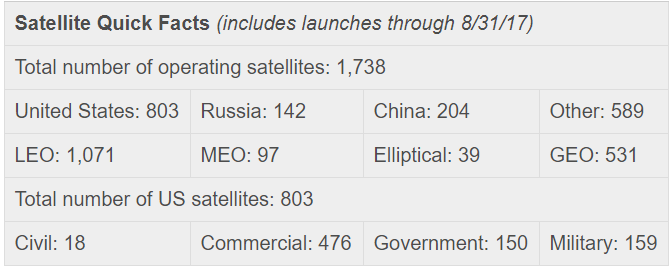A newly updated version of the UCS satellite database was released this fall, including launches through the end of the summer. The total number of operating satellites is now 1,738.
The changes to this version of the database include: the addition of 321satellites, the deletion of 35 satellites, and, as always, the addition of and corrections to some satellite data.

The number of active satellites has historically grown modestly over time, since the newly-launched satellites are balanced by those that are de-orbited or have become inactive. But this quarter, 321 new satellites were added to the database, a record by far. While sheer numbers are growing, it’s also important to keep in perspective that much of this growth is in small satellites. For example, nearly half of the new satellites were Planet Labs’ Doves, part of a constellation of small satellites designed to provide constant, timely imagery of the earth’s surface. Dozens of others were Spire’s Lemur small satellites, providing commercial weather and ship-tracking services. Also launched were 20 new Iridium NEXT low earth orbit communications satellites. These satellites, at 860 kg launch mass, weigh as much as 86 Lemur satellites or 215 Doves.
In any case, it seems clear that the growth in numbers of satellites won’t be as slow as it used to be, and may accelerate quite a bit in the future. In 2016, commercial companies filed for a U.S. Federal Communications Commission license for 8,731 non-geostationary communications satellites, including 4,425 for SpaceX, nearly 3,000 for Boeing, and 720 for OneWeb.
